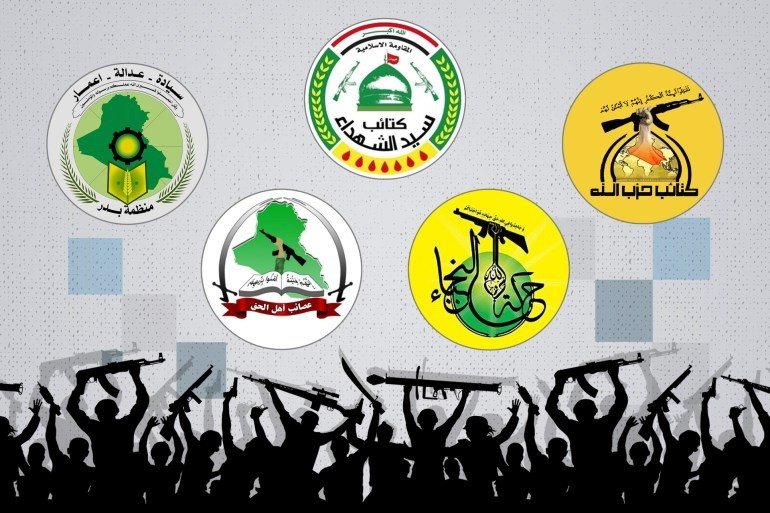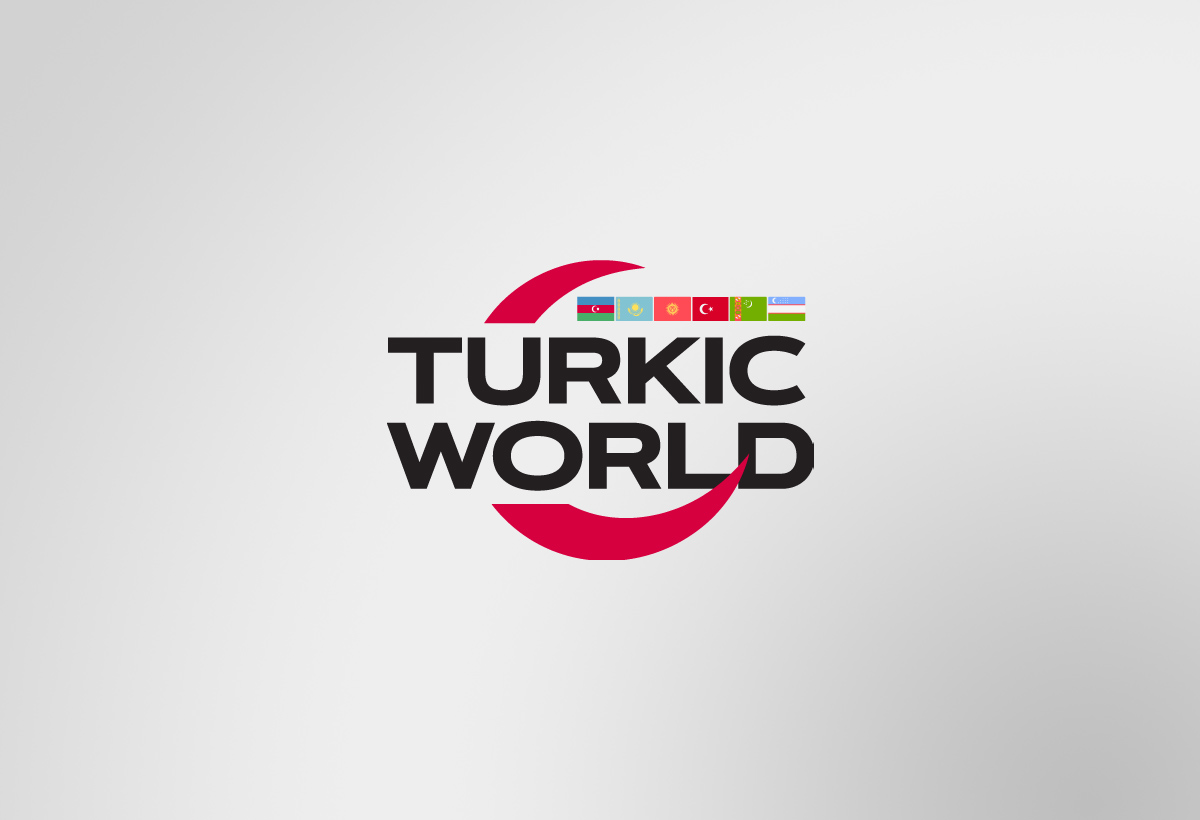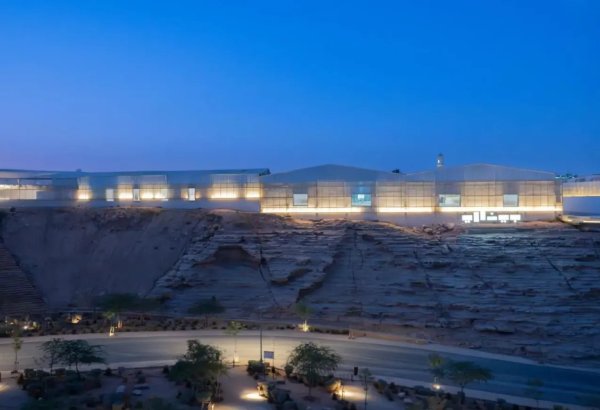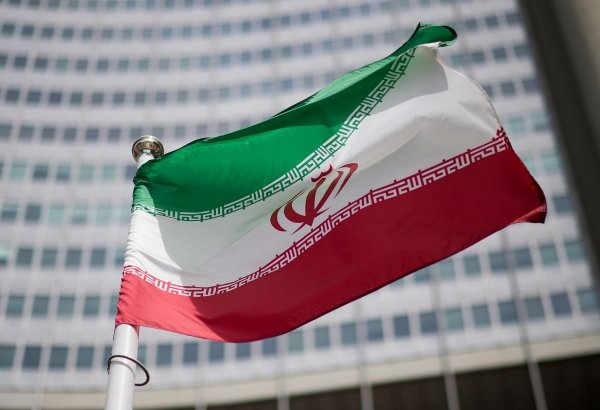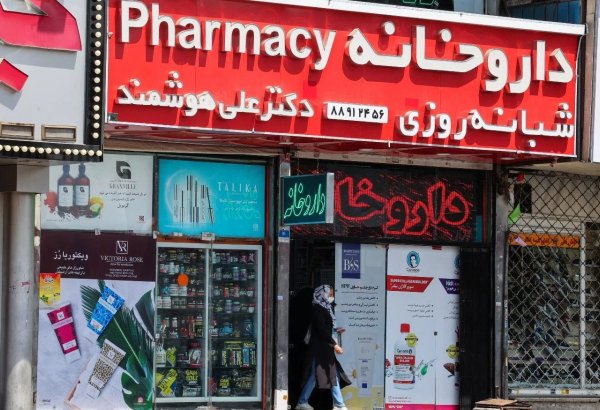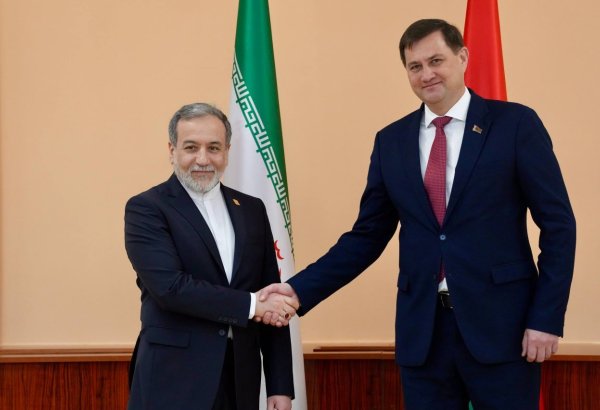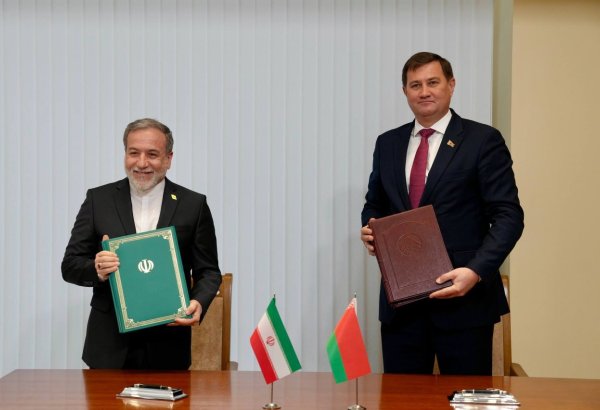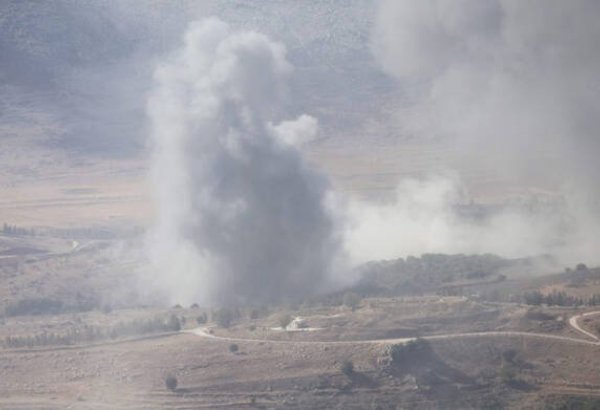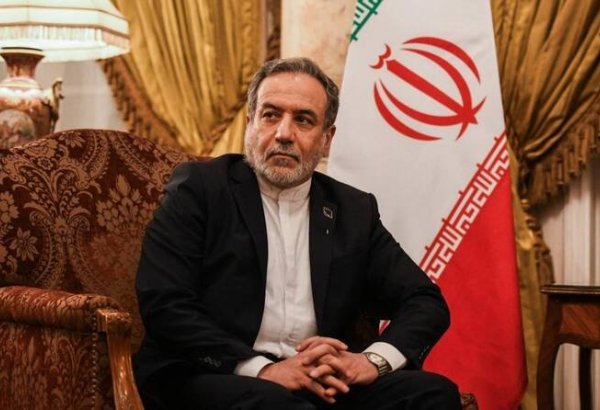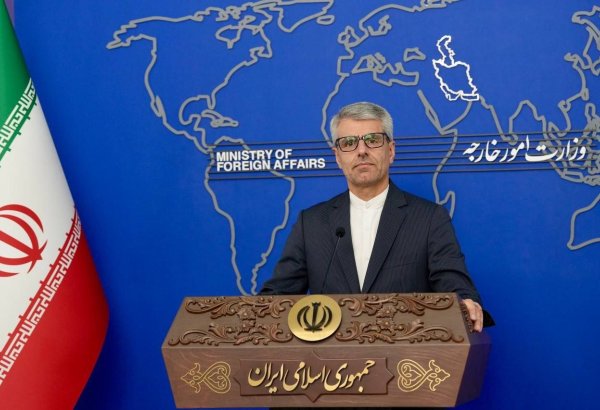BAKU, Azerbaijan, January 9. The Middle East doesn’t do half-measures. It’s a battlefield where politics are all-or-nothing, and power decides who wins the game. For over forty years, Iran has been hustling to cement its dream: the “Axis of Resistance.” This wasn’t just some regional alliance; it was Tehran’s masterstroke—a web of allies and proxies built to push back against Western influence and box in Israel. But now, this once-mighty powerhouse is creaking under the weight of its own ambitions, staring down crises that could blow it all apart, TurkicWorld/BakuNetWork reports.
It all kicked off in 1979. The Islamic Revolution didn’t just flip Iran’s internal script; it redrew its playbook for foreign policy. The IRGC and its elite Quds Force became Tehran’s export arm, spreading the revolutionary gospel. Lebanon, riddled with chaos, was a perfect testing ground. Enter Hezbollah—a militia-turned-powerhouse that quickly became a regional kingpin, thanks to Iran’s bankroll and strategy.
By the 2000s, Iran wasn’t just playing defense—it was going all-in. The U.S. invasion of Iraq and the chaos of the Arab Spring left a giant power vacuum, and Tehran pounced. Iraq became a critical link in the Axis, connecting Iran to Syria and Lebanon. Bashar al-Assad’s Syria? That was Tehran’s linchpin. Billions in financial aid, truckloads of weapons, and a steady flow of trained fighters turned Iran into the shadow architect of the region’s new order.
But here’s the catch: all that influence came with a monster price tag. Western estimates peg Hezbollah’s annual support at $700 million, while Syria and Yemen swallowed billions more. This was geopolitical muscle-flexing on a budget that Tehran could barely afford.
Then came the knockout punch: the assassination of Qassem Soleimani in 2020. Soleimani wasn’t just another general; he was the guy holding the Axis together, the operator who turned Iran’s regional chaos into a strategy. When he was taken out, the cracks in Tehran’s empire started to show. The 2023 flare-ups across the region only hammered that point home—Soleimani’s successors just don’t have the same pull.
And while Iran was losing ground abroad, things at home were unraveling fast. By 2023, over 60% of Iranians were scraping by below the poverty line, inflation had shot past 50%, and youth unemployment hit a staggering 27%. Protests rocked the country, fueled by economic despair and a growing resentment of the regime’s heavy-handed rule. Tehran’s domestic house was on fire, and it couldn’t afford to keep propping up its regional ambitions.
Syria, once Tehran’s ace in the hole, has become a liability. Assad, after soaking up billions in Iranian aid, is now playing the field—cosying up to Russia and mulling over ties with Arab neighbors. Meanwhile, Israel’s airstrikes are relentless, pounding supply routes and shredding Tehran’s logistics.
Even Hezbollah, Tehran’s golden child, is struggling to keep its grip. Lebanon’s economic implosion has left the group vulnerable. Public support has nosedived by 20%, and Iran’s funding has been slashed by a third. The Axis is fraying, and Tehran knows it.
So what’s next? Iran is at a fork in the road. Adapt or crumble—that’s the choice. The days of unchecked influence are gone, and Tehran has to rethink its game. Flexibility, smaller alliances, and smarter strategies might keep the Axis alive, but the old playbook is toast.
The stakes couldn’t be higher. This isn’t just about Iran; it’s about the future of the Middle East. If Tehran manages to pull off a comeback, the region could spiral back into conflict. But if the Axis collapses, it might just mark the end of an era—the final nail in the coffin of Iran’s grand vision of resistance.
The Middle East doesn’t wait. It’s a pressure cooker, and Tehran is running out of time to keep its seat at the table. Whatever happens next, one thing is clear: the region’s future is being written now, and it’s going to be anything but quiet.
The Waning of the “Resistance” Vision
The warning signs were impossible to ignore. By 2020, a pivotal moment exposed the fragility of Iran’s grand regional strategy. The U.S. drone strike that killed a key Quds Force commander wasn’t just a targeted assassination—it was a seismic blow to the “Axis of Resistance.” This figure wasn’t merely a military leader; he was the glue that held Iran’s proxy network together, coordinating operations from Yemen to Lebanon and rallying allies under a unifying vision. His death didn’t just damage Iran’s image; it revealed the underlying weakness of a system built on personal charisma and informal connections rather than durable institutions.
What followed was an economic stranglehold that further tightened the noose around Tehran. In 2016, Iran was exporting 2.5 million barrels of oil per day. By 2023, that number had nosedived to less than 300,000 barrels. Over $100 billion in frozen assets remained inaccessible, choking the regime’s ability to finance its proxies. Sustaining the Axis became not only a financial burden but also a political liability, as protests erupted across Iran in response to economic despair.
By 2023, the cracks in the Axis were no longer subtle—they were gaping. Palestinian factions in Gaza, dependent on Iranian arms, found themselves facing supply shortages. Hezbollah, once the crown jewel of Tehran’s influence, experienced a significant decline in public support. Surveys in Lebanon showed a 20% drop in its popularity, reflecting growing resentment among Lebanese citizens. Meanwhile, Syria—a vital logistical hub for the Axis—plunged into chaos. Relentless Israeli airstrikes hammered Iranian-linked infrastructure, cutting off crucial supply chains and exposing vulnerabilities in Tehran’s regional reach.
Syria: The Collapse of the Corridor
The unraveling of the Axis reached a critical juncture with Syria’s weakening. The Assad regime, bolstered for decades by Iranian funds and military aid, is now teetering on the brink of economic collapse. Anti-regime protests, Assad’s overtures to Arab states, and his growing reliance on Russian support have made him a far less dependable partner for Tehran.
Without secure Syrian territory, Iran’s corridor of influence—stretching from Tehran to Beirut—has begun to disintegrate. The land route, once a lifeline for moving arms and personnel, now faces potential disruption. Analysts estimate that relying on maritime or aerial transport, especially under blockade conditions, would increase costs by 300–400%, significantly straining Tehran’s already overstretched resources.
Internal Unrest: The Home Front Erupts
While external challenges mount, Iran’s internal crises are amplifying the strain. Over 60% of Iranians now live below the poverty line, inflation has skyrocketed past 50%, and youth unemployment has hit an all-time high of 27%. Protests that began in 2022 laid bare a level of public anger that Tehran can no longer suppress or ignore.
As economic conditions worsen, funding the Axis of Resistance has become increasingly unpopular among ordinary Iranians. Critics within the country argue that Tehran’s focus on regional influence is a waste of resources that could be better spent addressing the dire needs of its struggling population.
Turning Point or the Endgame?
The Axis of Resistance is at a historic crossroads. It cannot continue in its current form. The combination of unrelenting sanctions, fractured alliances, logistical breakdowns, and internal dissent poses an existential challenge for Tehran’s strategy.
Adapting to these new realities might still be possible, but it would require a radical rethinking of Iran’s approach. Tehran would need to decentralize its influence, focus on localized alliances, and prioritize flexibility over rigid control. The alternative is collapse—a dissolution of the Axis and a dramatic reduction in Iran’s regional clout.
The Middle East is entering an era of rapid, unpredictable shifts. Yesterday’s allies could become tomorrow’s enemies, and the old rules of the game no longer apply. Tehran’s decisions in the coming years will determine not just the fate of the Axis of Resistance but the entire balance of power in the region.
Will Iran manage to hold on, adapt, and reshape its strategy? Or will it fade into history as a fleeting power that burned bright but couldn’t sustain its ambitions? Time will deliver the verdict, but one thing is clear: the Middle East is poised for seismic change, and Iran’s Axis of Resistance is at the heart of this unfolding drama.
Tehran’s Last Cards: Yemen and Iraq
Facing mounting setbacks, Iran is clinging desperately to the few zones of influence still firmly within its grasp. Yemen and Iraq now stand as critical battlegrounds where the “Axis of Resistance” struggles to maintain its footing, though both fronts reveal the deep cracks in Tehran’s strategy.
Yemen serves as a “quiet front,” but it is far from dormant. Iranian-backed Houthis continue to hold strategic positions in northern Yemen, periodically launching high-profile missile and drone strikes. In 2023, the Houthis ramped up their attacks around the Red Sea, creating friction along maritime routes that are vital to Saudi Arabia’s economy and security.
Despite its peripheral appearance, Yemen’s conflict carries significant weight. Control over the southern gateways to Saudi Arabia and the Red Sea provides Iran with leverage against Riyadh and international shipping routes. Yet, this leverage is showing strain. Houthi forces face growing challenges: military fatigue, dwindling resources, and international isolation have eroded their ability to sustain offensive operations.
Iraq, once the linchpin of Iranian influence, is now a stage for growing contradictions. Following the fall of Saddam Hussein, Iran capitalized on the power vacuum, nurturing a network of Shiite militias that played pivotal roles in Iraq’s fight against ISIS. Over time, these groups transitioned from military actors to political powerhouses, embedding Tehran’s influence deeply in Iraq’s political system.
However, in recent years, Iran’s heavy-handed patronage has sparked backlash among Iraq’s Shiite elite. Militias such as Kataib Hezbollah and Asaib Ahl al-Haq, once united under Tehran’s umbrella, have fractured. Some factions remain loyal, while others seek independence or turn to wealthier backers, including Arab Gulf monarchies eager to counterbalance Iran’s sway.
Iraq’s worsening socio-economic conditions add fuel to this volatility. By 2023, youth unemployment in Iraq had soared past 30%, and systemic corruption remained a significant roadblock to recovery. Meanwhile, new geopolitical players, particularly China, are moving in, offering investments aimed at diminishing Iran’s foothold.
Both Yemen and Iraq reveal the precarious state of Tehran’s regional ambitions. External pressures, combined with shifting internal dynamics, are forcing Iran to confront the limits of its influence and resources.
A Pivot to Survival
Despite these crises, Iran is not throwing in the towel. Statements from Iranian officials suggest an ongoing effort to recalibrate the Axis of Resistance. Constrained by sanctions and dwindling resources, Tehran is leaning on military innovation. By 2023, drone production had surged by 50%, and Iran expanded its arsenal of precision-guided missiles. These advancements serve not only to bolster Tehran’s defenses but also to send a message of resilience and deterrence across the region.
The paradox of Iran’s current position is striking. The Axis of Resistance is visibly weaker, but the crisis could spur its transformation. Tehran appears to be shifting toward a strategy of more flexible, localized alliances, reducing its dependence on direct territorial control and large-scale commitments.
Global power dynamics further complicate the picture. China, with its growing presence in the Middle East, could become a decisive factor. Should Beijing yield to U.S. pressure and cut back on Iranian oil purchases, Tehran’s economy would face an even steeper decline. Conversely, if China continues investing in regional infrastructure projects, Tehran might find avenues to sustain its regional influence.
Meanwhile, the U.S. has doubled down on pressure. In 2023 alone, American airstrikes hit over 50 Iranian-linked targets in Syria, disrupting Tehran’s ability to move resources and diminishing its operational reach.
The Middle East is entering a period of rapid and unpredictable realignment. Tehran’s strategy hinges on outlasting its adversaries, betting on their eventual exhaustion. Yet, this volatile region leaves little room for complacency. Even a temporary pause in hostilities could easily give way to a new wave of violence.
The Future of the Axis
The fate of the Axis of Resistance has implications far beyond Iran. It is a litmus test for the broader balance of power in the Middle East. If Tehran can adapt and hold onto even a fragment of its influence, the region is likely to be pulled back into cycles of confrontation. Should the Axis collapse entirely, it could signal not just the end of Iran’s grand vision but also a reshaping of the regional order.
The Middle East stands on a knife’s edge, caught between the hope for de-escalation and the threat of renewed conflict. The Axis of Resistance’s survival is more than a question of Iran’s ambitions; it is a harbinger of what lies ahead for the region and the fragile global balance of power.








